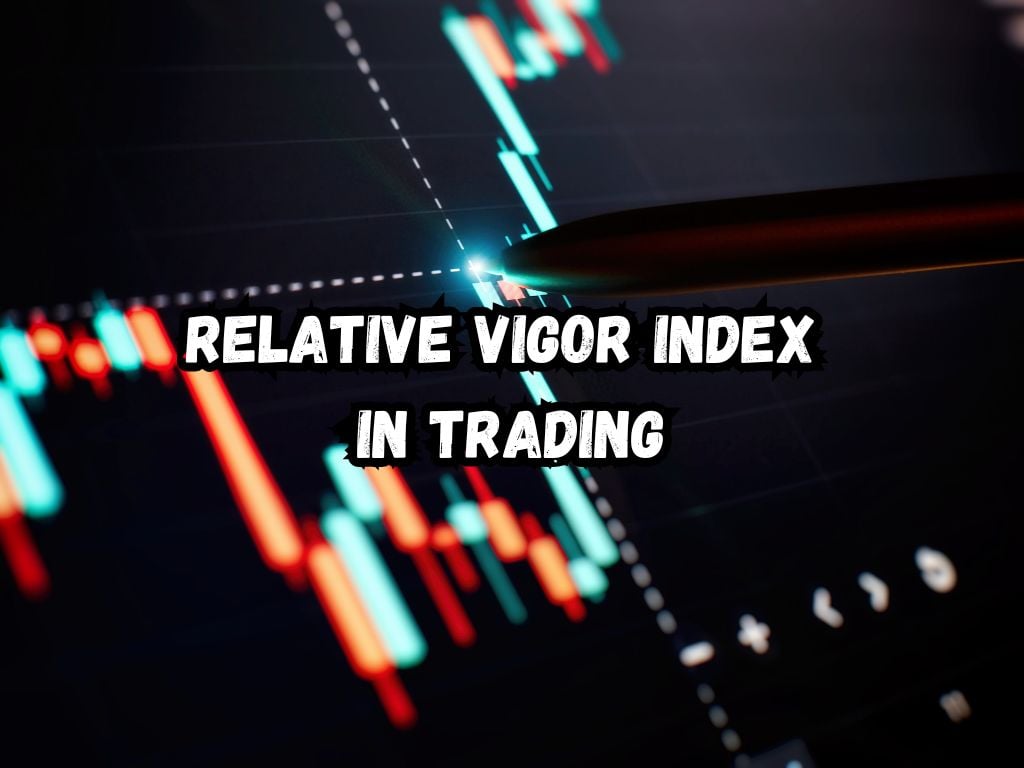The Relative Vigor Index (RVI) holds a unique spot among trading indicators, particularly when traders seek to capture the momentum in the market.
Like many indicators, its primary goal is to signal the strength behind a market’s move, whether bullish or bearish. Understanding momentum is crucial for traders aiming to enter or exit positions at the most opportune times.
This article delves into the Relative Vigor Index, unraveling its mechanisms, applications, and how it stands in comparison to other momentum indicators.
What is the Relative Vigor Index in Trading?
The Relative Vigor Index is a technical analysis indicator designed to highlight the direction in which the market’s energy or vigor is moving.
At its core, RVI operates on a simple yet profound market belief: that prices tend to close higher than they open in bullish markets and lower in bearish ones.
This indicator was developed with the intent to measure the conviction of a market move by examining the positioning of the closing price relative to the opening within a given timeframe.

Relative Vigor Index in Trading
Calculating the RVI involves a few key steps centered around price movements within specific periods.
The numerator of RVI is the difference between the current period’s closing price and its opening price. The denominator is the range of the period, calculated as the difference between the high and low prices.
After calculating this ratio for a period, RVI is smoothed by applying a moving average, typically of 10 periods, to both the numerator and denominator separately before dividing these averages to get the RVI value.
Understanding RVI Signals
The Relative Vigor Index is plotted with its signal line, which is the moving average of the RVI.
The interaction between RVI and its signal line generates trading signals. When RVI crosses above its signal line, it signals potential bullish momentum, suggesting it might be a good time to buy.
Conversely, a cross below the signal line indicates bearish momentum, signaling a possible sell opportunity.
Though straightforward, these crossover signals should be approached with caution and corroborated with other analysis tools.
Application of Relative Vigor Index in Trading Strategies
Smart integration of RVI with other technical indicators can greatly enhance a trading strategy.
Consider pairing RVI with moving averages to confirm the trend direction or with the MACD to validate momentum shifts. Utilizing RVI in conjunction with stochastic oscillators can also refine entry and exit signals, providing a clearer picture of market conditions.
Analyzing case studies where RVI was successfully applied can offer practical insights into its strategic use in various market scenarios.
However, traders should remain aware that no indicator works perfectly in all market conditions or time frames.
RVI vs. Other Momentum Indicators
When compared to other momentum indicators like the Relative Strength Index (RSI) or the Stochastic Oscillator, RVI provides a unique perspective by focusing more on the relationship between closing and opening prices than merely price changes.
This approach can offer advantages in identifying early signals of trend strength or weakness.
However, RVI’s reliance on this narrow set of data also presents limitations, as it may miss broader market shifts detectable by more comprehensive indicators.

Pro Tips for Using Relative Vigor Index
For traders aiming to leverage RVI effectively, adjusting the indicator’s period setting based on the market and trading style can improve responsiveness or smooth out false signals.
Paying attention to divergences between RVI and price action can also uncover potential reversals missed by other traders.
Lastly, complementing RVI analysis with a solid understanding of market fundamentals ensures decisions are grounded in a balanced view of market forces.
Frequently Asked Questions
What makes the Relative Vigor Index unique among momentum indicators?
RVI’s unique approach lies in measuring the “vigor” of price movements by focusing on the relationship between the closing and opening prices within periods, offering insights into the momentum’s strength based on this specific aspect.
Can the Relative Vigor Index be used in all types of markets?
Yes, RVI can be applied across different markets including stocks, forex, and commodities. Nonetheless, traders should adjust the settings and strategies according to the particular characteristics and volatility of the market being traded.
How do traders interpret divergences in RVI?
Divergences occur when the price action moves in the opposite direction of the RVI. For instance, if prices reach new highs while RVI fails to do so, it might hint at an upcoming reversal. Such divergences signal that the market momentum is not supporting the price movement, potentially indicating a significant shift.
What are the common pitfalls or mistakes traders make when using RVI?
One common mistake is relying solely on RVI for trading decisions. No indicator should be used in isolation due to the risk of misleading signals. Successful traders combine RVI with other analytical tools to confirm their strategies.
How can beginners best incorporate RVI into their trading strategies?
Beginners should start by familiarizing themselves with RVI through backtesting and practice in demo accounts. Integrating RVI with a basic set of complementary indicators and adhering to a disciplined trading plan can provide a solid foundation for incorporating this tool into broader trading strategies.
Conclusion
The Relative Vigor Index stands out as a momentum indicator focused on the essence of price dynamics. By understanding and applying RVI within a comprehensive toolkit of technical analysis methods, traders can sharpen their insights into market trends and momentum.
Like any analytical tool, the key to success with RVI lies in judicious application and ongoing learning.
Practicing with RVI across different market conditions and in combination with other analysis tools can help traders refine their strategies and decision-making processes, ultimately contributing to more informed and effective trading operations.


 Tags:
Tags:










